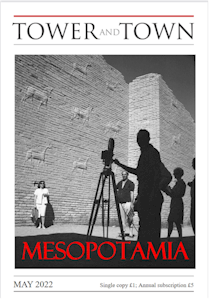

Tower and Town, May 2022 (view the full edition) (view the full edition)The Aerial FeedersBy early May, with plenty of insects on the wing, all our "aerial feeders" have returned, including the swift, the swallow and the two martins. First to arrive is the dainty sand martin, as early as mid-March: it has sandy-brown upper parts, a dark underwing and a white breast with a brown necklace, details that are not that easy to spot as you track them with your binoculars as they flicker and flutter over lakes and gravel pits. They nest in burrows in traditional colonies: in Wiltshire the Cotswold Water Park and the quarries in Calne attract the largest numbers. Recently, in response to a drop in U.K. breeding numbers, artificial sand banks have been created in reserves such as Minsmere and the London Wetland Centre, with spectacular success It was once thought that our swallows hibernate in mud banks and reed beds in the winter months: even Gilbert White, author of The Natural History of Selbourne, was confused as to the truth of the matter. Barn swallows, those much-loved harbingers of spring, are broad-front migrants arriving from early April from southern Africa and staying with us until September, sometimes later. The nest is open at the top, on a ledge or beam inside a barn or a shed. Swallows are often double-brooded, in good years even stretching to a third brood. The most glamorous of the hirundines, distinctive features include the blue upperparts, rufous forehead, chin and throat, and the long, pointed tail streamers. A few years ago house martins created a nest on a ledge above our garage doors, and they have returned every year since to entertain us with their comings and goings. They zip down our lane flashing their white rumps and calling with excited "prip-prip" sounds. It is particularly pleasing as the season moves on to see the heads of the youngsters peeking out from the nest.  In the first week of May, sitting in my office in what was the Old Music School, I used to hear a welcome sound: the ringing screams of newly arrived swifts circling the St Peter's Church tower. I discovered recently that their calls have been recorded, dropped in pitch and slowed down, after which the screams convert into a pleasing, ghostly warble! Swifts eat, mate and even sleep on the wing. Be careful if you pick up a grounded one: you'll soon find fleas and lice crawling over your hands. Robin Nelson |